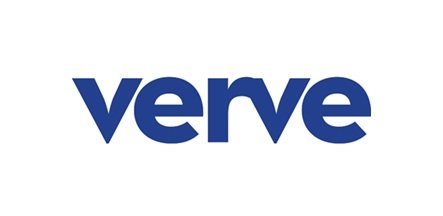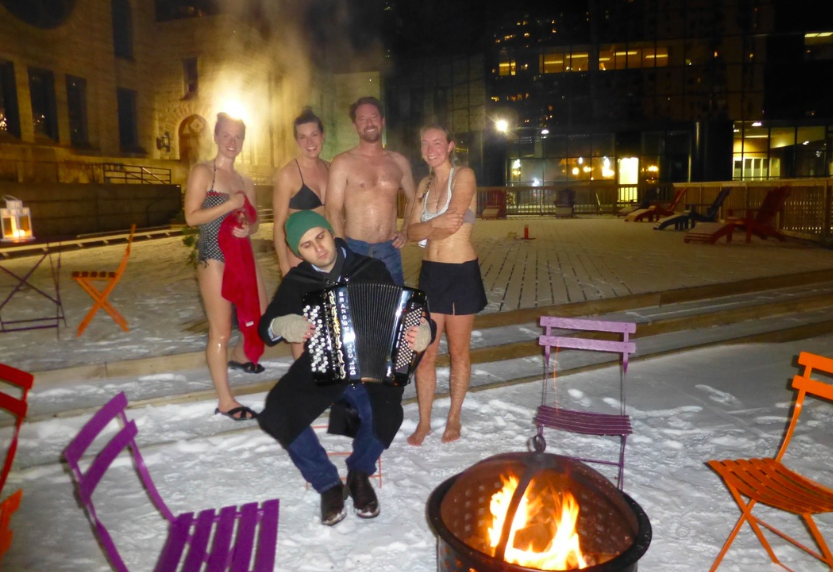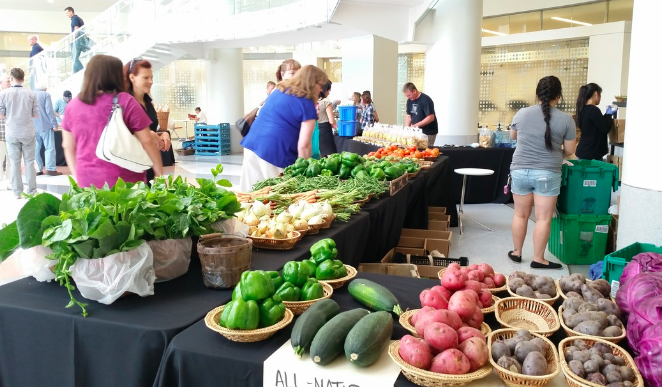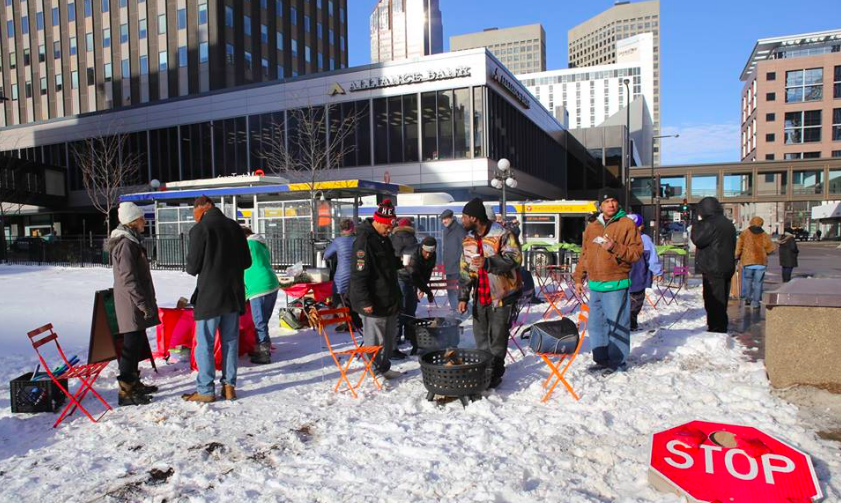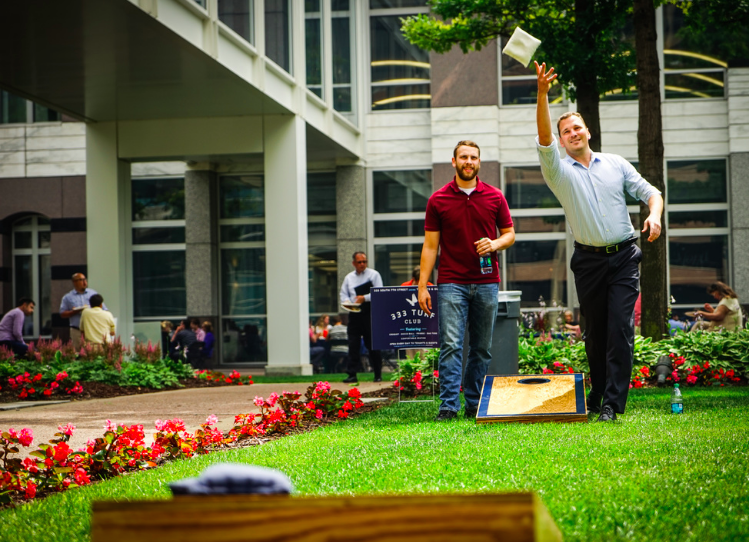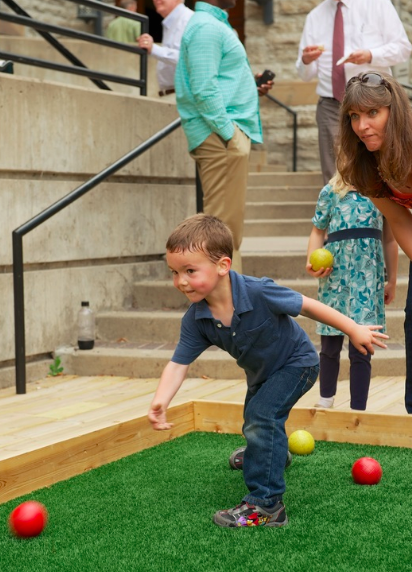Max Musicant - Magic at the Margins
/Max Musicant really just wants small, good things to happen.
He drills down to details: mobile seating, flowerpots, tables for an indoor public market or Ping Pong.
As a placemaker for hire, Max thrills to enliven places where the public and private meet. “My personal theory of change,” he offers, “is to create more humane and inviting spaces for all.”
He is a human tool-kit of strategies for placemaking within neighborhoods to make them, well, more neighborly. Even downtown, where there are lots of buildings, lots of people, lots of cars, and not so much neighborhood, Max drives the ideal of the “Friendly Front Yard.”
There is appeal in the vision he paints: an open front door, blooming and green things, nicely appointed furnishings, a landing place to greet and interact with others. Max reimagines that sense of welcome within the glass and steel urban core. My goal? “Vibrant hubs of activity and social value.”
Max says it’s in the margins – a ground floor lobby, atrium, or plaza – those crucial “in between” spaces where placemaking magic happens.
These are the spaces full of people before and after work and during lunch hour, navigating as they sort into offices for the day or transit home. In these passageways, people hurry along and are distracted; they look down at their phones or silently jam to music in their ear buds, barely noticing their surroundings. Max notes how alone most people are, even in the proximity of others: “Technology opens up space for people. But it isolates us; it keeps us from running into each other, face to face.”
The built environment, too, limits cross-pollination. “Downtown, we have prioritized privacy and separation,” Max says, referencing the silo-ed towers, maze-like warrens of cubicles in offices, “members only” social rooms, and closed-door conference rooms. He continues, “Even the buildings don’t relate to each other. They do not connect except through the skyways.”
Human connectivity and “chance encounters” are prominent effects of good placemaking. Attributes of the ancient marketplace, really, that have been lost in our hurry up world. To regain ground, Max channels two thought leaders, Jane Jacobs and William (Holly) Whyte as he re-frames placemaking possibilities for downtown Minneapolis.
Jacobs and Whyte were New Yorkers and placemakers who researched, argued for and wrote about preserving and producing human-scaled, pedestrian-friendly and vibrant cityscapes. In their placemaking ideal, human interaction is prioritized, serendipity is planned for, and the livelier the public space, the better.
Jacobs (1916-2006) advocated advancing public safety through “eyes on the street.” She fought passionately for maintaining and celebrating public thoroughfares – those useful, familiar spaces where, she argued, people gather naturally. She favored a gritty, jam-packed sidewalk over a decorated, but empty, public park blocks away. Jacobs was known for keeping New York City neighborhoods bustling, walkable and people-centered.
Whyte (1917-1999), for his part, painstakingly observed and documented human behavior throughout the city. He noticed what spaces were devoid of human luster, and those that sparkled. He noted zones where people hurried through, and where they lingered. He understood that intentional design – wide sidewalks, mobile seating, places to people watch, shade, access to sunlight, music, games and food - is what enlivened public spaces best. Whyte famously declared, “What attracts people most, it would appear, is other people.”
Max considered both Jacobs and Whyte as he studied urban planning and business while in college, and after college when he worked in community development in Jamaica, Queens. Yet, “I always wanted to be rooted in Minneapolis,” he says with a smile. The Musicant Group, his brainchild and a Minneapolis placemaking consultancy, is now his hometown focus. Max says time away gave him needed perspective on this place. His work experience across planning, marketing and finance taught him that “good service equals economic benefit.”
At Capella Tower in downtown Minneapolis, The Musicant Group has livened up the building’s sweeping, 3-story atrium on the ground floor. Marketing materials leverage the new vibe of the place: Collaboration and wellness, weekly programs like an indoor farmer’s market, art-making classes, meditation sessions and building-wide happy hours. Peace Coffee caffeinates visitors in the lounge, open to the public, with plenty of seating, big windows, free Wi-Fi, art installations, and a funky circular fireplace. Max’s team supplies an on-site, full-time manager who facilitates engagement in the atrium, schedules programming, and monitors and measures usage.
“For Capella,” Max says, “it’s a leasing strategy, tenants are happy.” Companies who rent in the Capella Tower benefit from increased “employee satisfaction.” And the whole motley lot that mingles in the common spaces? Max says there, the effect is “hospitality, community, buzz.”
At other sites, The Musicant Group focuses outside, re-framing a building’s “front yard” on the sidewalk or front lawn (yes, a few buildings downtown still have a front lawn!), or between buildings in quasi-public plazas. Summer programming is relatively standard, and Max’s team tinkers with activities and experiences so participants can embrace each of our city’s seasons. Max says: “We provide movable chairs, tables, yard games, music, even a portable sauna in winter.”
Minneapolis is not alone in tracking this trend. “Denver and Austin have great places to gather and just hang out. They make it easy for small, good things to happen. I’m trying to create that here: a small-scale looseness to unlock vibrancy and economic vitality.”
Max is confident these small yet intentional interventions will make a difference in Minneapolis. He remains optimistic and flexible: “We implement pilots, try small things, add moveable elements. If it’s a disaster, we can remove it then try something else.”
For more information:
https://www.pps.org/article/jjacobs-2
https://www.pps.org/article/wwhyte
Photo credits: Tracy Nordstrom, Capella, Star-Tribune, The Musicant Group
